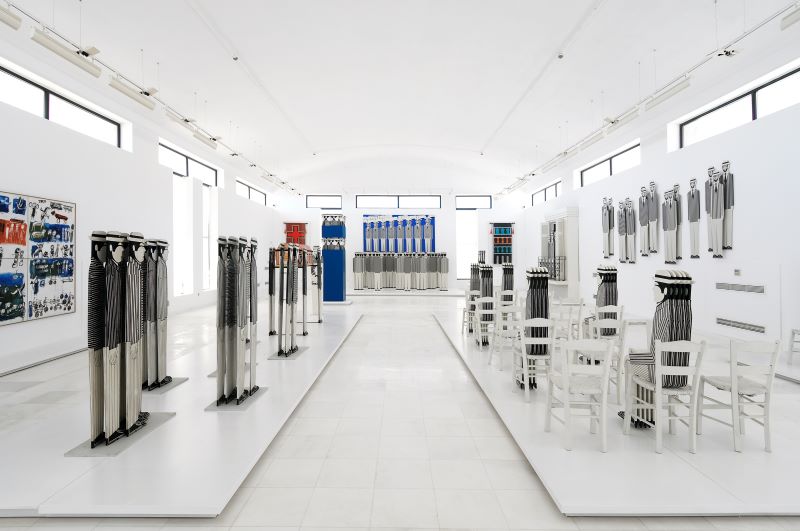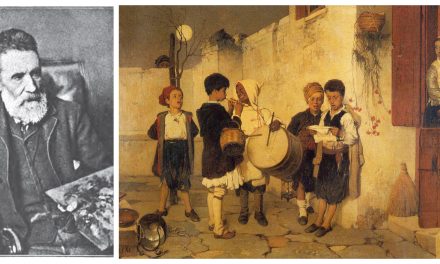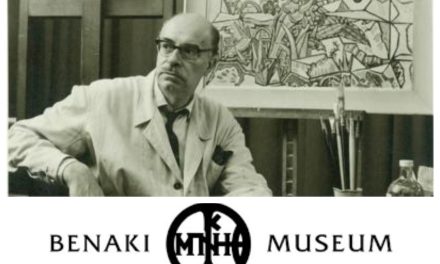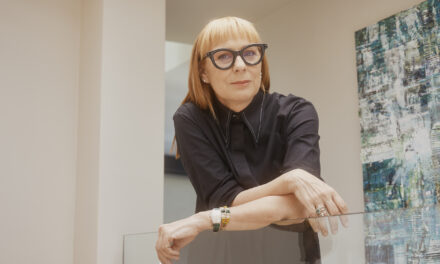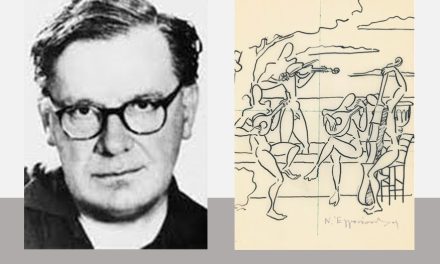A museum dedicated to the works of painter Yannis Gaitis (1923-1984) and sculptor Gabriella Simossi (1926-1999) has recently opened its gates on the Cycladic island of Ios, reflecting both artists’ love for the island. Featuring rare architectural elements, the museum dominates the island’s landscape in a prominent position above Chora, the island’s capital, and close to the Odysseas Elytis Theater.
Gaitis was one of Greece’s greatest modern artists, whose work became worldwide famous for capturing mass society’s anonymity, uniformity, and sterility. Simossi was his wife and an important artist in her own right, known for her surrealistic, abstract works with symbolic and poetic qualities. The museum buildings were designed by architect Jacques Charrat and architect-museologist Loretta Gaitis, daughter of Gaitis and Simossi, who also carried out the museological study.
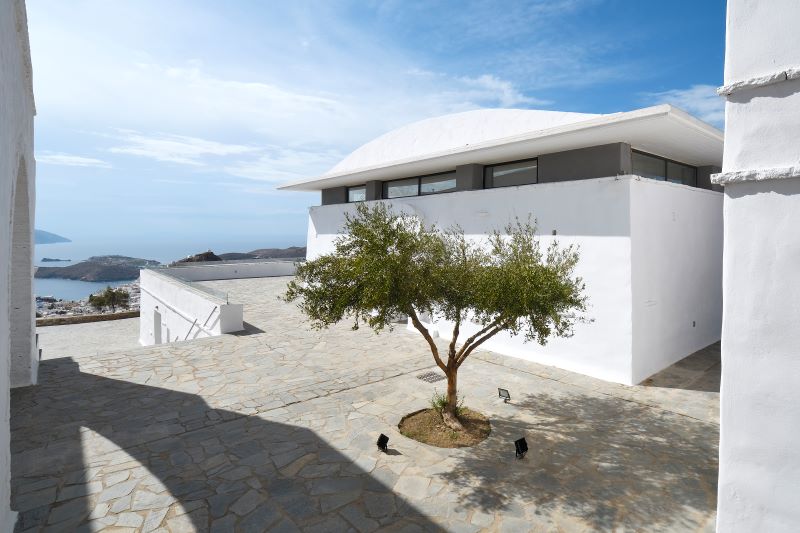
The permanent exhibition is housed in two main buildings. The “Gaitis building” presents works from the artist’s early creative period and also paintings, installations and constructions based around his trademark “little men” (anthropakia), which majestically dominate the space. The architecture of the building itself is inspired by these iconic figures: the curve of the roof alludes to the shape of their hats, while the entrance door is inspired by the image of a head seen from the front.
The “Simossi Building” features a dozen large white resin sculptures on pedestals. Simossi evidently loved white: the sculptures are white, the walls whitewashed, and white marble runs across the floor and pedestals. Sculptures from earlier periods and collages with strong Surrealist elements complete the permanent collection.
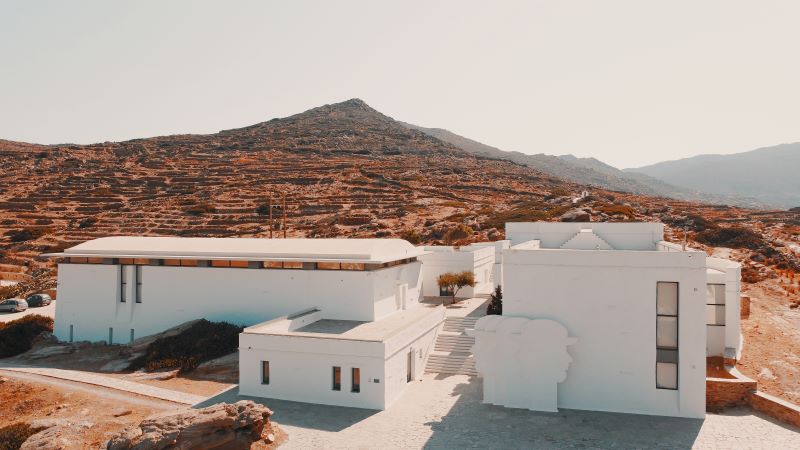
Although Gaitis’s birthplace was the island of Tinos, his life and work have been linked to Ios; he discovered this small Cycladic island in the 1960s on a trip with his dear friend, writer and documentary filmmaker Jean-Marie Drot. Both loved the place and decided to “make a pact with the island and put down roots in this rocky soil”. Not long after, in 1964, Gaitis designed and directed the construction of Jean-Marie Drot’s house on Ios, while his wife Simossi created imposing sculptures, both on the outside terraces facing the sea, and inside the house. A few years later, Yannis Gaitis began building his own house on the other side of the small cove, with the two buildings facing each other.
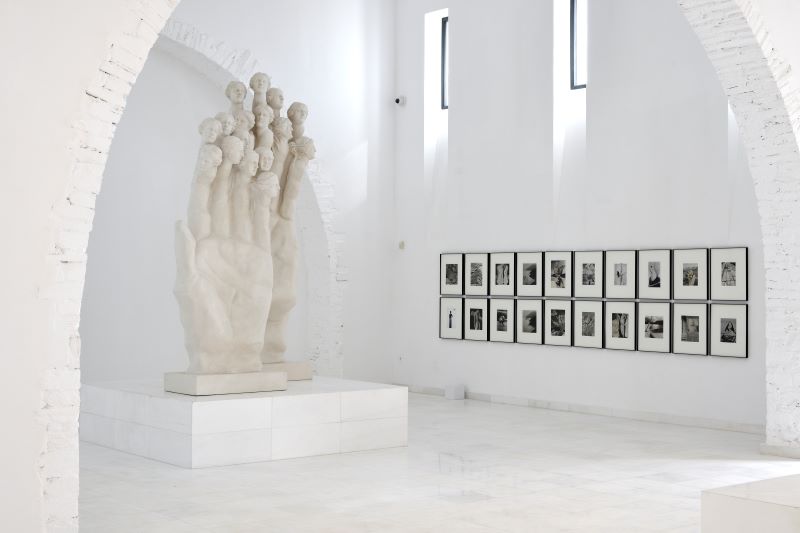
About Yannis Gaitis
Born in Athens in 1923, Yannis Gaitis studied at the Athens School of Fine Arts under Konstantinos Parthenis from 1942 to 1948. However, he rarely attended lessons, believing that the teaching he received neutralized his creative forces instead of enhancing them. In 1944, he held his first solo exhibition in his home studio. Ever since, his studio became a meeting place for personalities from the fields of art and literature such as Miltos Sachtouris, Yannis Tsarouchis, Minos Argyrakis and Odysseus Elytis.
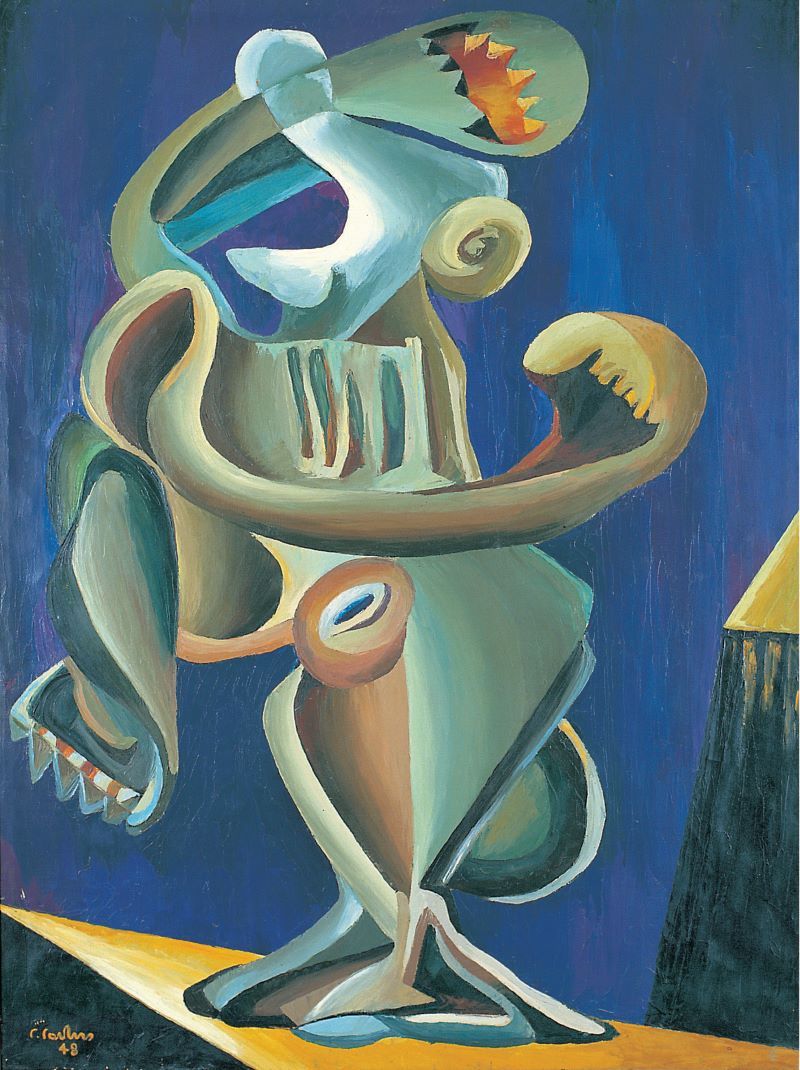
In 1947, his exhibition at the Parnassos Literary Society in Athens featured 34 paintings with cubist and surrealist elements, causing a scandal. In 1949, together with abstract painter Alekos Kontopoulos, he founded the artists’ group Oi Akraioi (The Hardliners), which included painter Yannis Maltezos, painter Dimitris Hytiris and sculptor Lazaros Lameras. In November, the newspaper O Aionas mas (Our Century) publishes the movement’s manifesto. It was a radical expression of their rejection of realism and figurative tendencies.
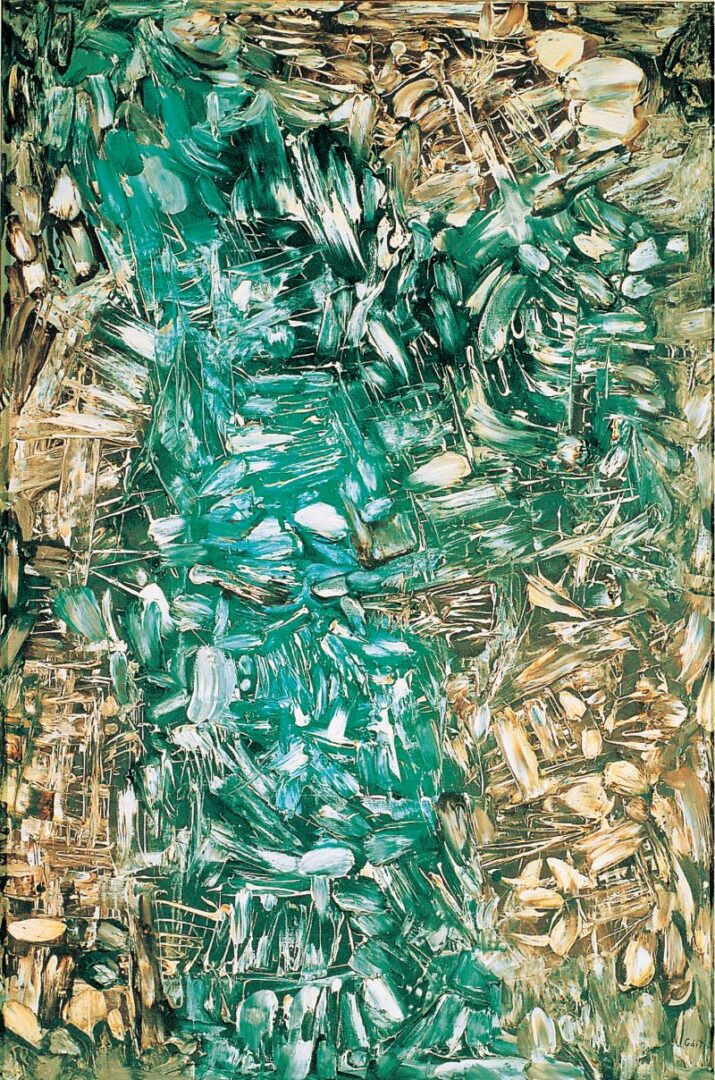
In 1954, he moved to Paris with his wife, Simossi, whom he had met at the Athens School of Fine Arts. Gaïtis explored new movements, visiting museums and galleries. He embraced abstraction, influenced by the likes of Fautrier, Mathieu, Hartung, Soulages and Manessier. He painted ceaselessly, seeking to absorb and surpass the new influences he discovered in Paris. As he liked to say, “In Greece, I was twenty years ahead, here I’m twenty years behind”.
In the years that followed, Gaitis took part in solo and group exhibitions around the world, including Paris, Brussels, Prague, Geneva, Zurich, Athens, Rome, Venice, Milan, Belgrade, Skopje, Chicago, San Diego, New York, Los Angeles, San Francisco, Rio de Janeiro and São Paulo.
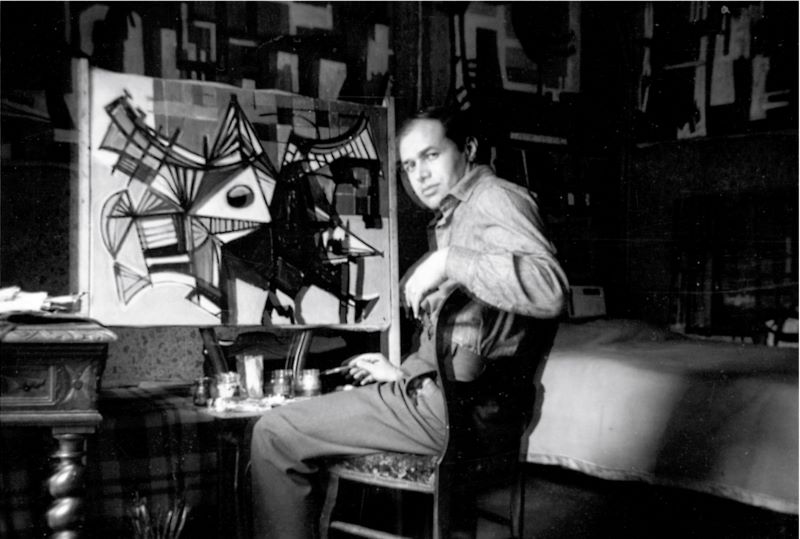
In 1960, his work was featured in the film Pourquoi Paris en 1960? (Why Paris in 1960?) by Jean-Marie Drot, who wanted to tell the story of why foreign artists chose to live Paris. In this film, the Greek sculptor Takis was also featured among other foreign artists.
Gaitis delved into performance art, using his body, paintsing with his palms and fingers, often directly on the floor. He worked spontaneously, accepting the desires of others in an act that was as much about play as it was about the pleasure of painting.
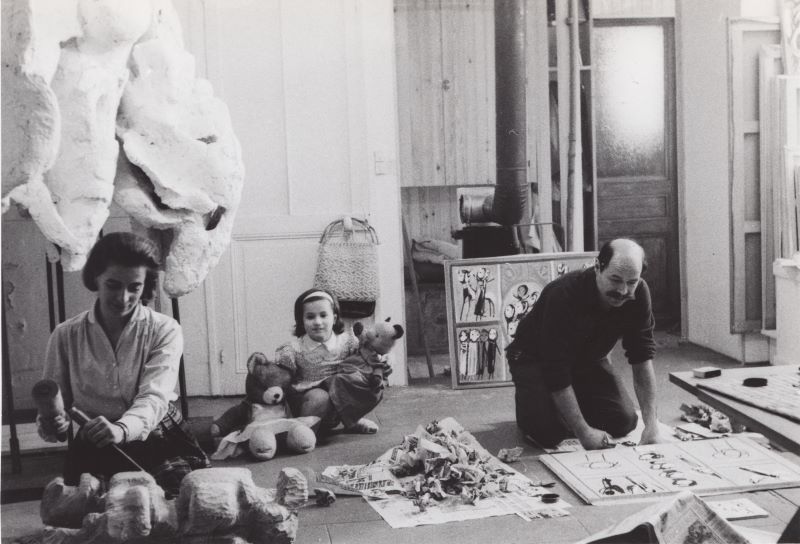
From 1967, his clearly politicized creations openly opposed the Greek Junta in Greece, with a famous example being his painting Murdering Freedom or The Colonels (1968). During the same period, he spent time in Brazil, presenting his new works in a gallery and at the São Paulo Biennial.
1968 was a pivotal year for his career, as he introduced the “little man” (anthropaki) the most representative element of his practice, an impersonal, sometimes solitary and sometimes repeated figure, usually drawn in profile. He depicted this figure in various settings, such as circus stages, parades, fairs, social events, amusement parks and town squares, as well as on images referring to homogenization, mass consumption and social alienation.
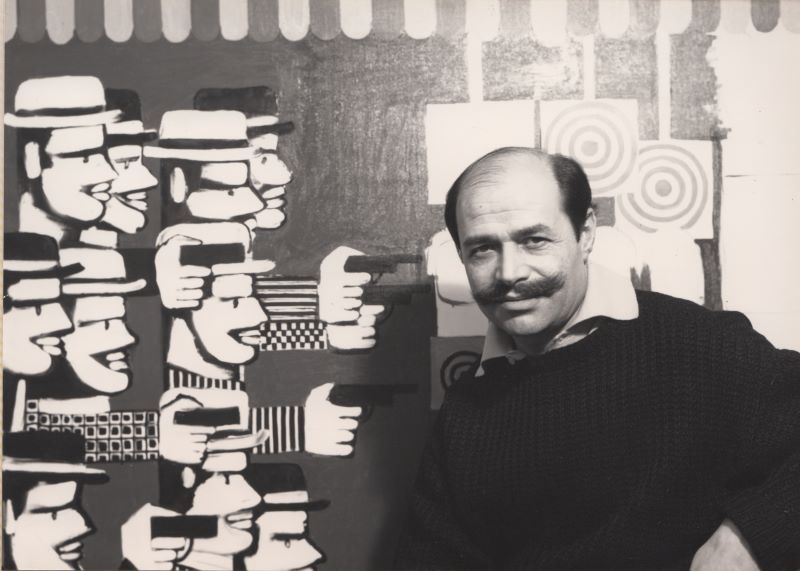
After the restoration of democracy in 1974, Gaitis left Paris and moved back to Greece. In the years that followed, the number of his exhibitions grew steadily. He organized solo exhibitions, but also took part in group shows in Greece and abroad.
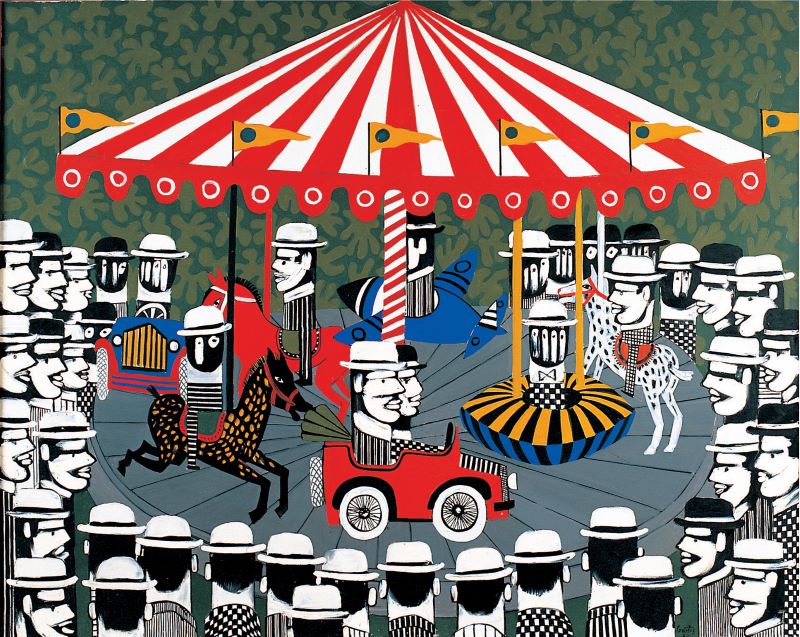
Yannis Gaitis defined himself as a “popular artist”. That’s why he often placed his little men in the street and organized “happenings”, which helped him establish direct contact with the public. In addition to his artistic activity, Gaitis also designed decors, created toys, furniture, plates and textiles, seeking to reach a wider audience, while fashion designers reproduced his work in their creations. He died on July 22, 1984, a few days after the opening of a retrospective exhibition of his work at the National Gallery in Athens.
About Gabriella Simossi
Gabriella Simossi was born on August 1, 1926 in Pyrgos in the Peloponnese, but grew up in Athens. At the age of 12, she made her first sculpture, and in 1945 began her studies at the Athens School of Fine Arts under Michael Tombros. She met her husband, Gaitis, while studying there. In 1949 she joined the artists’ group Oi Akraioi, the first post-war Greek art group to embrace contemporary trends, in which her Gaitis was a founding member.
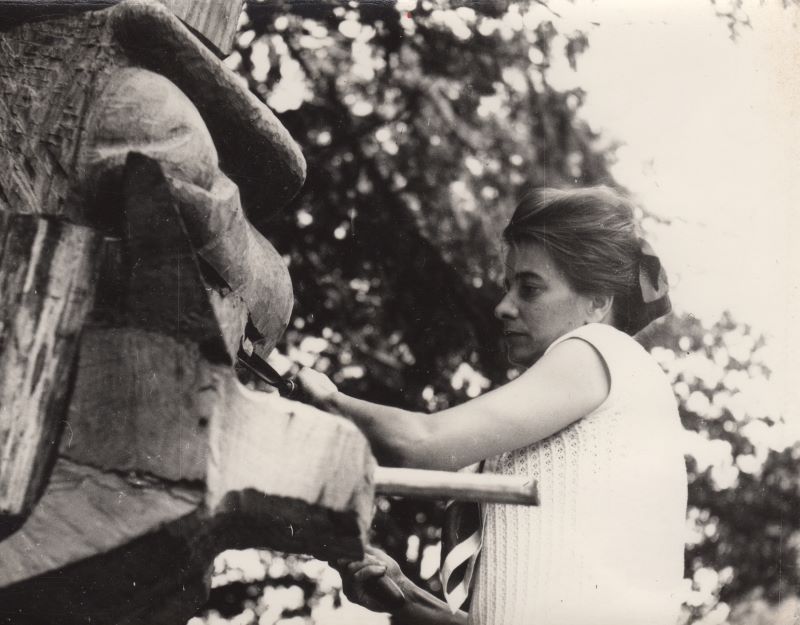
Simossi received a scholarship from the Greek government to study abroad, and she moved to Paris along with her husband in 1954. The following year she studied at the National School of Decorative Arts and at the Académie de la Grande Chaumière under sculptor Ossip Zadkine. In 1955, she paticipated in the Salon d’Automne at the Grand Palais, and the Salon de la Jeune Sculpture exhibition at the Rodin Museum; she would often exhibit her work there until 1972.
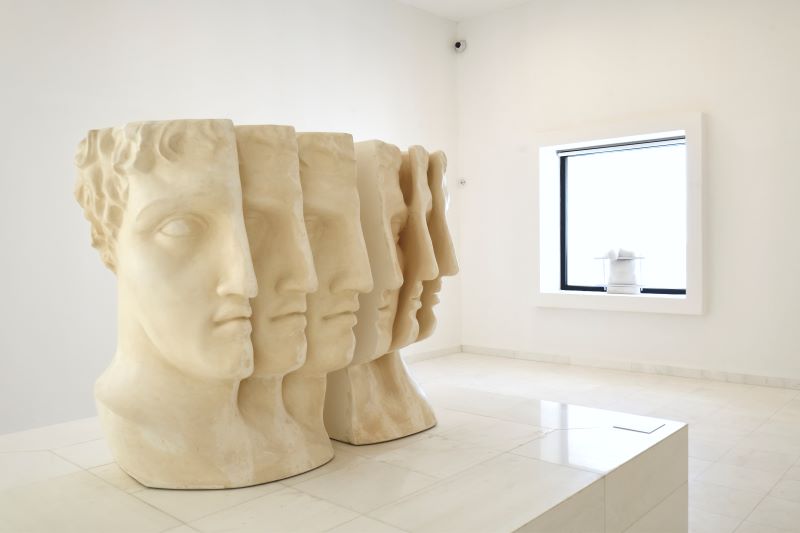
In 1962, together with Yannis Gaïtis, Michel Vafiadis, Jason Molfessis, Yannis Maltezos and Georges Touyas, she co-founded the group Kentra (Centers), which had exhibitions in Athens at the Nees Morfes gallery in 1963 and 1964, and at Galerie A in Paris in 1964. In 1964 she began sculpting works for Jean-Marie Drot’s house on the island of Ios. Among them we find the works Noon, Pegasus and Warrior.
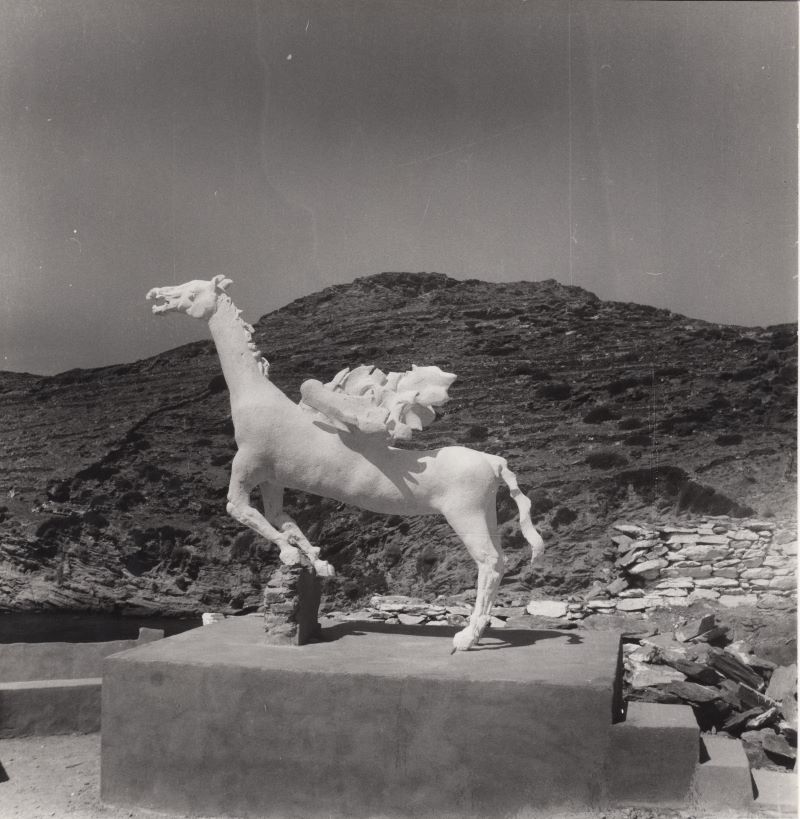
In the years that followed, Simossi continued to exhibit her work in France, but also in Yugoslavia, the United States, Poland, Italy, Sweden and Hungary. Over the years, Simossi smoothed and softened the surfaces of her sculptures. Her use of fragments became more prominent, with anatomical parts of the human body presented cut out and isolated. As she said in one of her interviews, “My material is composed of my memories. It comes from my memory’s ability to recall the shape of a human knee, for example, or a horse’s knee or a bird’s knee. It’s up to the artist’s aesthetic intervention to shape and fabricate this material from memory, to give it movement and life. My work is composed of visual memories. From school, from childhood. The joy of holding this material of memories, working with it and making art out of it. It fills me with emotion and gives me the strength to keep working”.
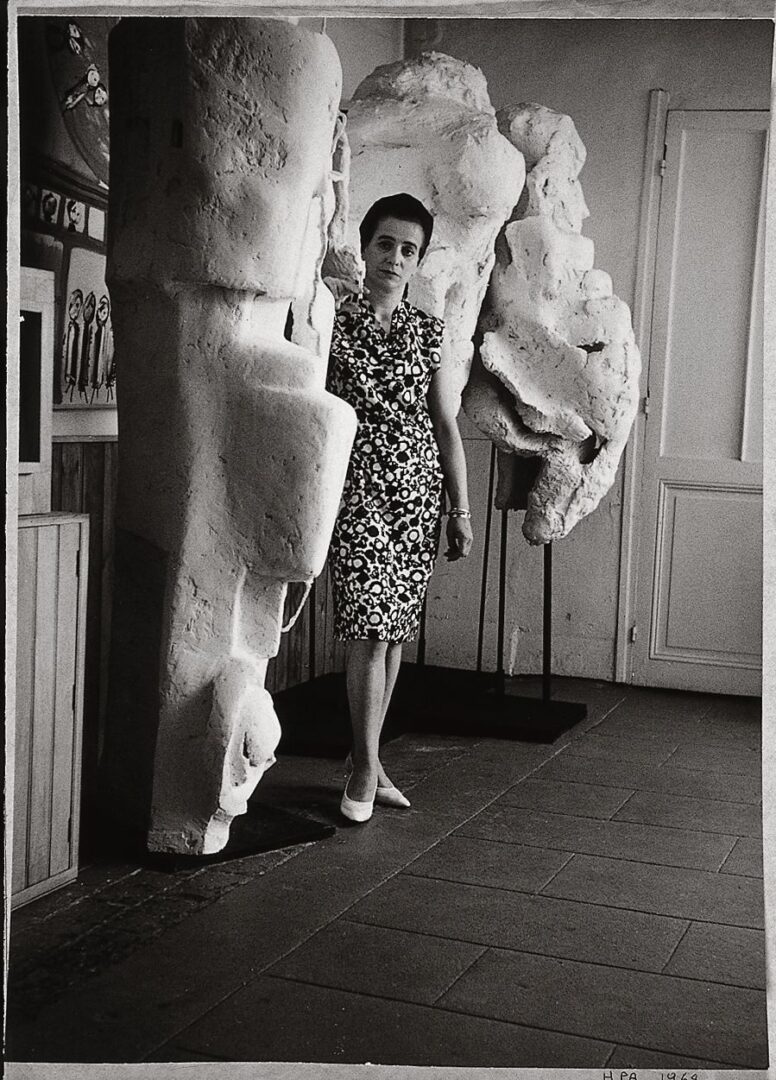
After the end of the fall of the Greek Junta in 1974, Yannis Gaitis settled permanently in Greece, while Simossi remained in Paris. Although separated, they remained on good terms with each other and were supportive of their only daughter, Loretta.
Simossi began creating photographic collages on paper. The unusual combination of carefully cut-out images produces enigmatic, poetic representations. Prints of her photographic collages are exhibited at the Centre Georges Pompidou, while her works are still exhibited in France, Greece and elsewhere. In 1992, the French Minister of Culture, Jack Lang, named her Chevalier (Knight) of the Order of Arts and Letters.
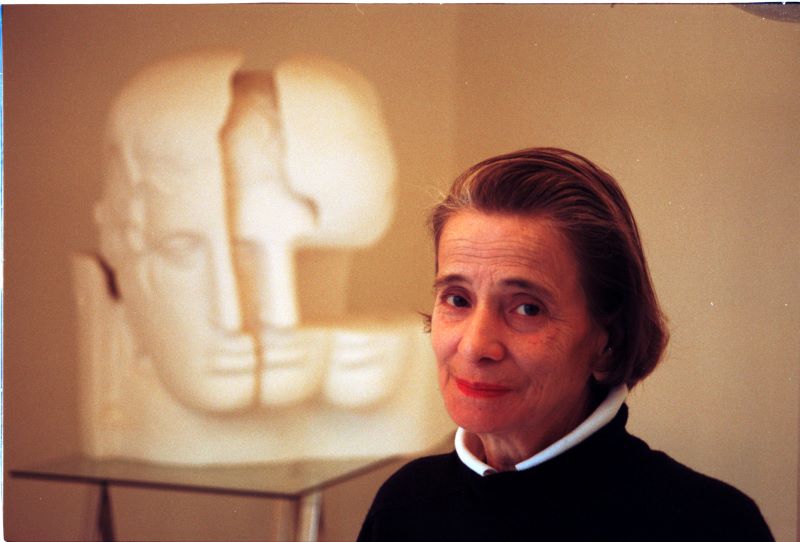
Gabriella Simossi died on May 27, 1999, two months before the opening of her major retrospective exhibition at the Cordeliers Convent in Paris.
*** The Gaitis-Simossi Museum, dedicated to the works of painter Yannis Gaitis and sculptor Gabriella Simossi, is the result of efforts by the artists’ daughter, Loretta Gaitis, to create a museum to house the works of her parents. Construction of the museum began in 2007 with funding from the European Union via the Ministry of Culture. The project came to a halt for various reasons, but then resumed its course. Thanks to the unfailing support of the Municipality of Ios, its Mayors Giorgos Pousseos, Michalis Petropoulos and Gykas Gykas, and the Municipal Council, Loretta Gaitis’s dearest dream became a reality, as in 2009 the building was completed, with the help of the Ministry of Culture. The museum sees itself as a living organism. To this end, a temporary exhibition hall is planned. Temporary exhibitions and events will provide the fresh breath essential to this vision.
The Gaitis-Simossi Museum was inaugurated in September 2024.***
Translated from the original article on Grèce Hebdo. Content and photos provided by the Gaitis-Simossi Museum. Intro photo: Interior view of the Gaitis building by Dimitris Foutris
Read also via Greek News Agenda: Arts in Greece | Yannis Gaitis, the Crowd, and Loneliness; Democracy exhibition at the National Gallery | Interview with Syrago Tsiara

